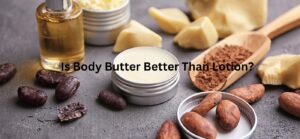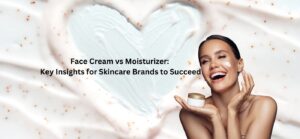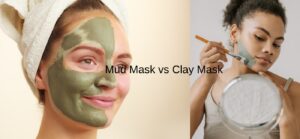In today’s skincare market, consumers are increasingly seeking products that provide a sense of luxury and indulgence, while also delivering real results. Among the vast array of skincare products available, mud and clay masks have emerged as two popular categories for deep cleansing and nourishing the skin. As a skincare brand, understanding the differences between these two types of masks and knowing how to strategically incorporate them into your product line can help position your brand as a trusted leader in the industry.
Understanding the Key Differences Between Mud and Clay Masks
Before diving into the strategic decisions for skincare brands, it’s essential to first understand the fundamental differences between mud masks and clay masks.
Mud Masks
Mud masks are made from natural muds, which are often sourced from mineral-rich locations like the Dead Sea, volcanic regions, or freshwater lakes. These muds are typically packed with a variety of minerals such as magnesium, calcium, and potassium. Mud masks are known for their deeply hydrating and detoxifying properties. They help draw out impurities and provide essential nourishment to the skin, leaving it feeling soft, smooth, and rejuvenated.
Key Benefits of Mud Masks:
Hydration: Mud masks provide intense moisture, making them ideal for dry or dehydrated skin.
Nourishment: The minerals in mud masks can nourish the skin, promoting a healthy, glowing complexion.
Detoxification: Mud masks draw out impurities, toxins, and excess oil, leaving the skin feeling fresh and clean.
Clay Masks
Clay masks, on the other hand, are derived from various types of natural clays such as kaolin, bentonite, or French green clay. Clay masks are particularly known for their ability to absorb oil, tighten pores, and purify the skin. These masks are excellent for people with oily or acne-prone skin, as they help control sebum production and clear blocked pores.
Key Benefits of Clay Masks:
Oil Control: Clay masks are particularly effective in balancing oily skin by absorbing excess sebum.
Pore Tightening: Clay masks can help tighten and refine pores, leading to a smoother complexion.
Detoxification: Like mud masks, clay masks also help remove toxins, but their primary focus is on oil control and deep pore cleansing.
2. Target Market Considerations for Skincare Brands
When deciding whether to offer mud masks, clay masks, or both, skincare brands must consider their target market and customer needs. Different skin types respond better to specific ingredients, and understanding these nuances will help brands make the best product decisions.
Customer Skin Types
Dry Skin: Mud masks are a natural choice for consumers with dry skin, as they offer the hydration and nourishment that dry skin needs. Mud masks are rich in minerals and can help replenish moisture while providing deep cleansing.
Oily Skin: Clay masks are ideal for consumers with oily or acne-prone skin, as they help control excess oil and minimize the appearance of pores. Bentonite and kaolin clays, for example, are excellent at absorbing oil and purifying the skin.
Sensitive Skin: While both mud and clay masks can be beneficial for sensitive skin, it’s important for skincare brands to carefully select ingredients that are soothing and non-irritating. Gentle mud masks, often with added soothing ingredients like aloe vera, may be more appropriate for sensitive skin types.
Consumer Preferences
There’s an increasing trend toward products that are not only effective but also natural, sustainable, and luxurious. Mud masks often carry a more indulgent and luxurious reputation, particularly those sourced from regions like the Dead Sea. On the other hand, clay masks are often marketed as effective, no-nonsense solutions for acne and oily skin. Skincare brands should consider these associations when developing their marketing messages and product positioning.
Skin Concerns
Acne-Prone Skin: For acne-prone skin, clay masks are typically the preferred choice due to their oil-absorbing and pore-cleansing properties.
Aging Skin: Mud masks, with their hydrating and nourishing properties, can be more suitable for anti-aging treatments, as they help replenish the skin’s natural moisture barrier.
Environmental Stress: Consumers concerned with environmental damage may lean towards mud masks, which often contain detoxifying minerals that help counteract pollutants and free radicals.
3. Formulation Strategies for Skincare Brands
Formulating either a mud mask or a clay mask requires careful consideration of the skin benefits brands want to highlight. Whether you’re focusing on hydration, oil control, or purifying effects, the right formulation will determine the success of your product.
Formulating Mud Masks
Mud masks should be formulated to enhance hydration and provide nourishment. Skincare brands should focus on incorporating natural minerals that help retain moisture while detoxifying the skin. Some key ingredients to consider when formulating mud masks include:
Aloe Vera: A soothing ingredient that helps calm the skin and prevent irritation.
Vitamin C: Known for its brightening and anti-aging properties, vitamin C can help improve skin tone and texture.
Essential Oils: Ingredients like lavender or tea tree oil can offer additional benefits, such as calming and antibacterial properties.
Brands should aim for a smooth, creamy texture that’s easy to apply and remove, ensuring the mask is comfortable for consumers to use.
Formulating Clay Masks
Clay masks should be formulated with the goal of balancing oil production while maintaining hydration. The formulation should focus on ingredients that absorb oil without over-drying the skin. Popular ingredients for clay masks include:
Bentonite Clay: One of the most powerful clays for detoxification, bentonite is ideal for oily and acne-prone skin.
Kaolin Clay: Milder than bentonite, kaolin clay is great for sensitive skin and works well for gentle detoxification.
Hyaluronic Acid: Including this ingredient ensures that the skin doesn’t feel overly dry after the clay mask is removed.
Witch Hazel: Often used for its pore-tightening properties, witch hazel can add extra benefits for customers looking for a refined, smooth complexion.
4. Marketing and Positioning for Skincare Brands
Once the formulation is set, skincare brands need to position their masks in a way that resonates with their target audience.
Brand Messaging
Mud Masks: Emphasize the luxurious, nourishing, and hydrating benefits. Mud masks can be positioned as a spa-like, indulgent experience, perfect for those looking to pamper their skin. Highlight the natural, mineral-rich ingredients that provide nourishment and a glowing complexion.
Clay Masks: Position clay masks as a highly effective, no-nonsense solution for deep cleansing, oil control, and pore refinement. Market these masks to consumers dealing with acne or oily skin, highlighting their ability to detoxify and purify.
Educating Consumers
Educational content is key to helping customers understand when and how to use each mask. Providing step-by-step instructions, tutorial videos, and blog content can help customers get the most out of their skincare routine. For instance, brands can explain the difference between mud and clay masks, when to use each, and how to maximize their effectiveness.
Packaging
Packaging plays an important role in how consumers perceive a product. For mud masks, consider packaging that feels luxurious, such as glass jars with elegant designs. For clay masks, sleek, modern packaging with clear benefits for oily and acne-prone skin may be more appealing. It’s also important to consider eco-friendly packaging options, as sustainability is becoming increasingly important to consumers.
5. Challenges and How to Overcome Them
While both mud and clay masks offer significant benefits, there are challenges that skincare brands may face when formulating or marketing these products.
Customer Confusion
Mud and clay masks can sometimes be confusing to customers, particularly those who are new to skincare. Brands can overcome this by providing clear, simple instructions and educational content that guides consumers through the benefits and best uses for each mask.
Sourcing Quality Ingredients
Sourcing high-quality, natural ingredients is crucial for both mud and clay masks. For mud masks, brands must ensure that the mud is sustainably sourced and free from contaminants. For clay masks, sourcing different types of clay that offer the desired benefits requires thorough research. Transparency in ingredient sourcing can help build customer trust.
6. Final Thoughts: The Strategic Choice for Your Brand
In conclusion, deciding whether to offer a mud mask, a clay mask, or both is a strategic choice that depends on your target market, skin concerns, and brand positioning. Mud masks are ideal for hydration and nourishing dry skin, while clay masks excel at oil control and pore refinement for oily and acne-prone skin. By carefully considering customer needs and market trends, skincare brands can make the best product choices to enhance their offerings.
If your skincare brand is looking to create high-quality mud or clay masks that resonate with your target audience, Opseve is here to help. With our expert formulation and manufacturing services, we can assist you in creating products that align with your brand’s mission and market demands.










